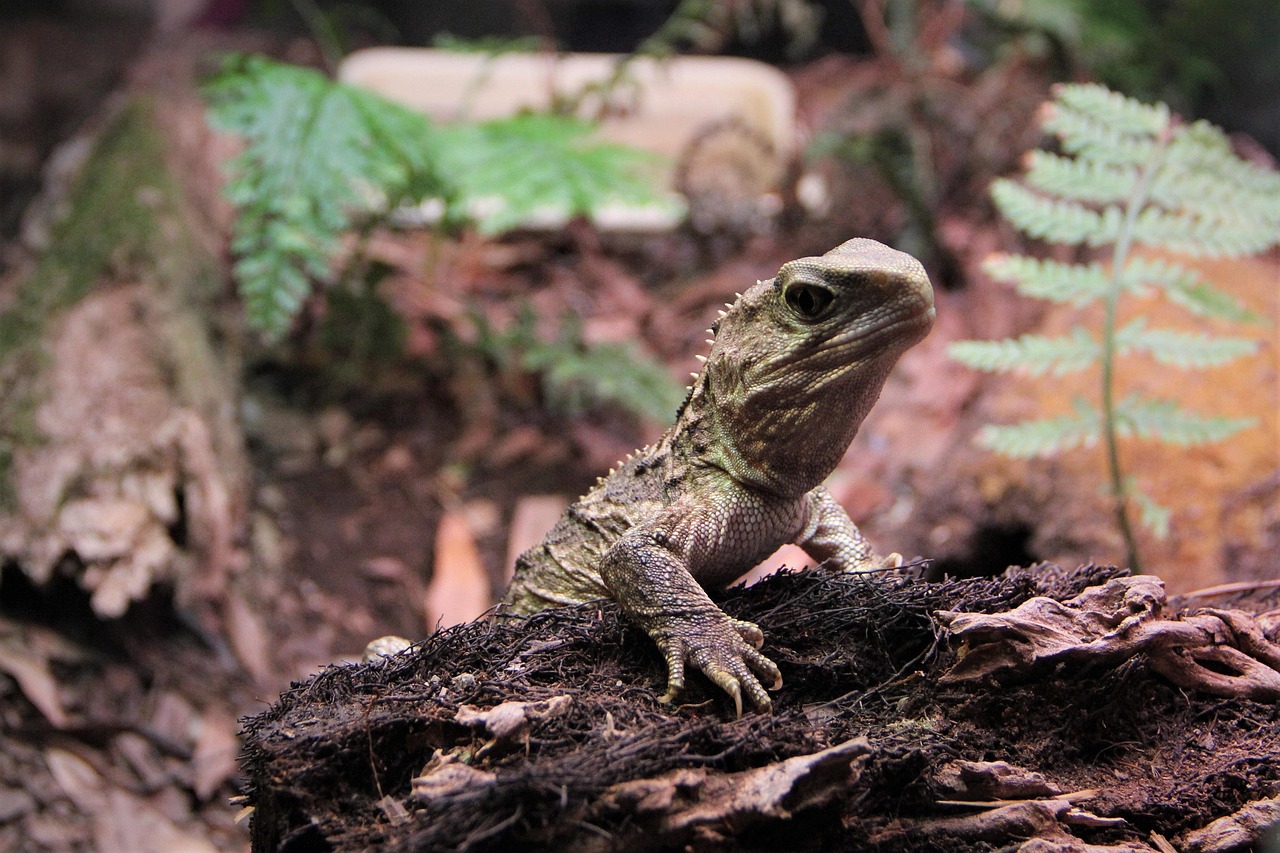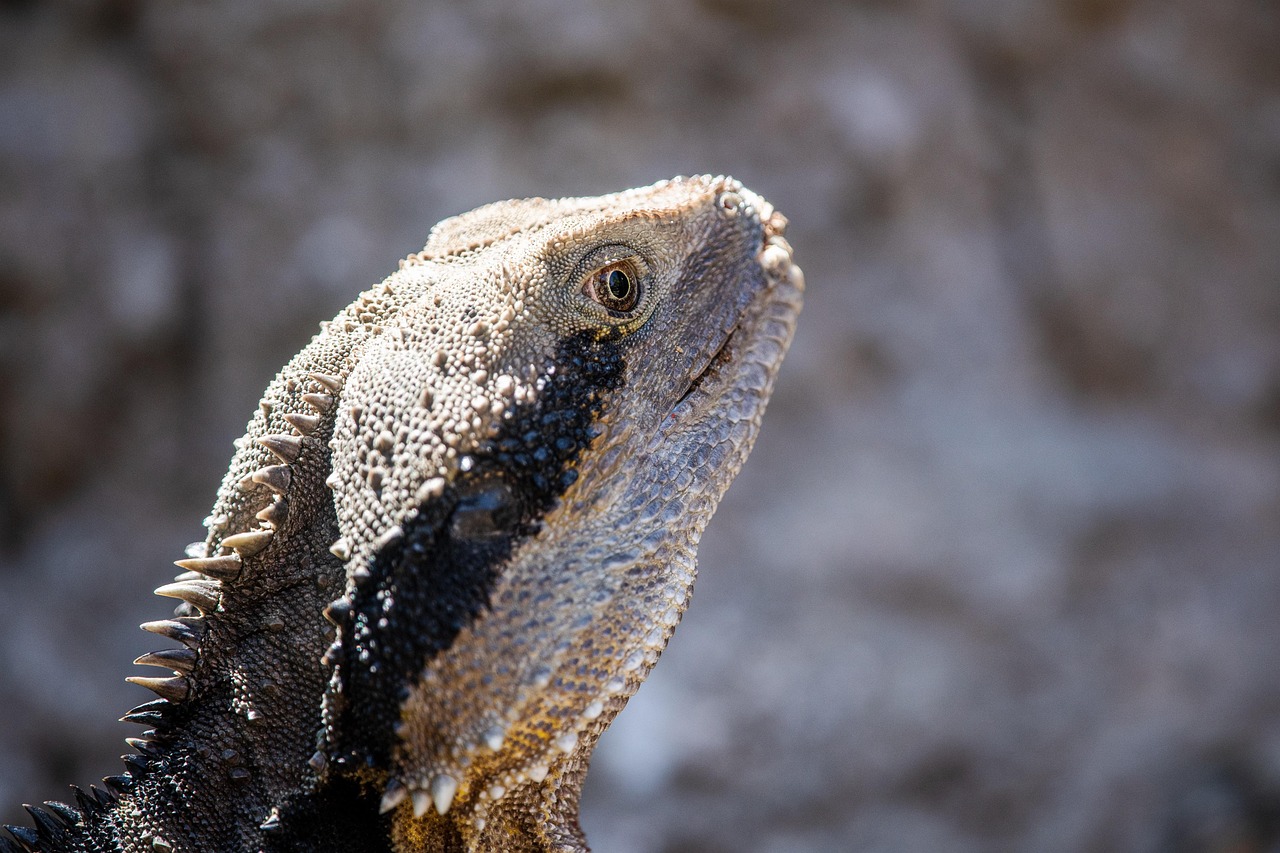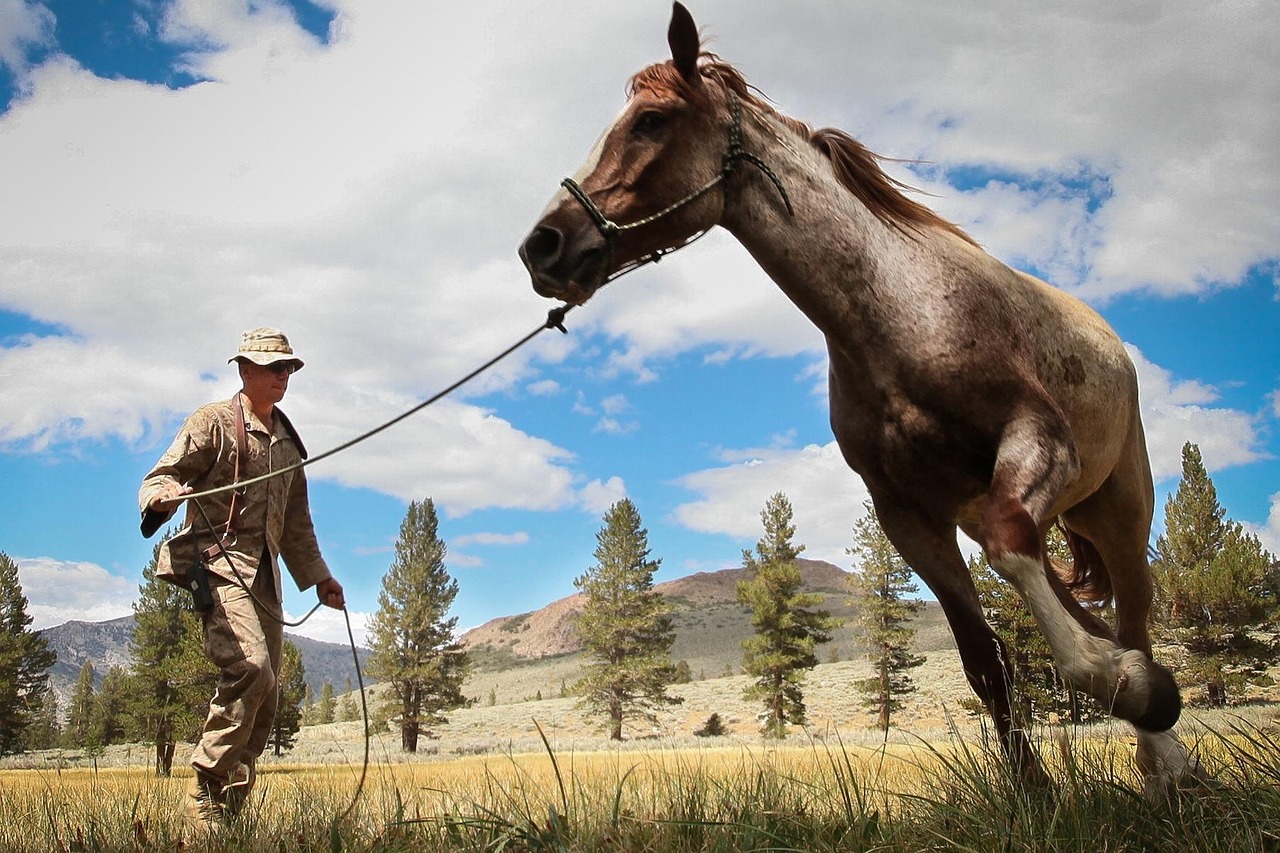The tuatara, a unique reptile native to New Zealand, faces endangerment due to several factors, including habitat loss, invasive species, climate change, and human activities. Conservation efforts are crucial to protect this ancient species and its ecosystem.
The tuatara (Sphenodon punctatus) is often referred to as a “living fossil.” This term reflects its resemblance to ancient reptiles that roamed the Earth millions of years ago. Tuataras are not lizards; they belong to their own order called Rhynchocephalia. These reptiles have captivated scientists and conservationists alike due to their unique biological features and evolutionary significance.
One of the most significant factors leading to the tuatara’s endangerment is habitat loss. Urban development, agriculture, and forestry have dramatically reduced the natural habitats where tuataras thrive. These changes lead to fragmentation of their populations, making it difficult for them to find mates and reducing genetic diversity.
Invasive species present another critical threat. Animals such as rats, cats, and dogs were introduced to New Zealand by humans. These predators hunt tuatara eggs and juveniles, significantly impacting their survival rates. The presence of these invasive species has disrupted the delicate balance of the tuatara’s ecosystem.
Understanding Tuatara Ecology

Tuatara inhabit specific ecological niches that are vital for their survival. They primarily reside in coastal areas, where they can find suitable burrowing sites. Their diet mainly consists of insects and other small invertebrates. Because of their unique physiology, tuataras have specific temperature requirements for breeding and development.
Their reproductive cycle is notably slow. Female tuataras lay eggs only every two to five years, with an incubation period that can last up to 15 months. This extended cycle makes their populations more vulnerable to environmental changes and predation.
| Factor | Impact |
|---|---|
| Habitat Loss | Reduction in living space and resources |
| Invasive Species | Increased predation on eggs and juveniles |
| Climate Change | Altered habitat conditions affecting breeding |
| Human Activity | Disturbance and habitat alteration |
Conservation needs for the tuatara are urgent. Efforts include protecting their natural habitats through legal frameworks and conservation areas. Additionally, controlling invasive species is critical for the survival of tuataras. Organizations are working tirelessly to create safe environments for these reptiles.
Moreover, raising public awareness about the tuatara’s plight is essential. Education programs emphasize the importance of preserving biodiversity and highlight the role that each species plays in its ecosystem. Through collective efforts, there is hope for improving the situation for the tuatara and ensuring its existence for generations to come.
Threats to Tuatara Survival
Understanding the specific threats to the tuatara is crucial for effective conservation strategies. These threats can be categorized into several key areas, each with its own implications for the species’ survival.
1. Habitat Destruction
As mentioned earlier, habitat destruction plays a significant role in the tuatara’s endangerment. Urbanization and agricultural expansion lead to the degradation of their natural environments. The loss of native vegetation and the alteration of coastal ecosystems significantly impact tuatara populations.
- Coastal Development: Construction projects along coastlines can destroy nesting sites and disrupt the ecological balance.
- Agricultural Practices: The use of pesticides and land conversion for farming can adversely affect the invertebrate populations that tuataras feed upon.
2. Invasive Species
The introduction of non-native species has had a devastating effect on tuatara populations. Invasive mammals, such as rats and stoats, pose the most significant threat. They not only compete for food but also prey on tuatara eggs and young.
The consequences of invasive species can be severe:
- Predation: Increased predation rates lead to lower survival rates for tuatara hatchlings.
- Competition: Invasive species compete for resources, further diminishing food availability for tuataras.
3. Climate Change
Climate change is another looming threat that affects the tuatara’s habitat and reproductive success. Variations in temperature and weather patterns can disrupt their breeding cycles and habitat preferences.
- Temperature Sensitivity: Tuataras are ectothermic, relying on external temperatures to regulate their body heat. Changes in climate can lead to unfavorable conditions for their survival.
- Rising Sea Levels: Coastal erosion and rising sea levels threaten their natural habitats, particularly on islands where many tuatara populations reside.
4. Human Interaction
Human activities continue to pose risks to the tuatara population. Activities such as tourism, development, and even research can inadvertently lead to disturbances in their natural habitats.
- Tourism: Increased foot traffic in sensitive areas can lead to habitat degradation and stress for wildlife.
- Research Activities: While scientific study is essential, improper handling or disturbance during research can affect breeding and nesting behaviors.
Conservation Strategies
Given the numerous threats facing tuataras, effective conservation strategies are essential. These strategies focus on mitigating risks and restoring populations through a combination of methods.
1. Habitat Restoration
Restoring natural habitats is critical to ensuring the survival of tuataras. This involves:
- Replanting Native Vegetation: Enhancing habitat quality by reintroducing native plant species that support local ecosystems.
- Creating Protected Areas: Establishing reserves where tuataras can thrive without human interference.
2. Invasive Species Control
A major focus of conservation efforts is controlling invasive species. Effective strategies include:
- Trapping and Culling: Implementing programs to reduce the populations of invasive mammals that threaten tuatara survival.
- Public Awareness Campaigns: Educating communities about the impacts of invasive species and promoting responsible pet ownership.
3. Climate Adaptation Measures
Addressing climate change effects requires innovative approaches, such as:
- Monitoring Weather Patterns: Keeping track of climate variables that could affect tuatara habitats and breeding.
- Creating Climate-Resilient Habitats: Developing strategies to ensure that tuatara habitats can withstand climate fluctuations.
Through these focused conservation strategies, there is potential for improving the overall health of tuatara populations and ensuring their long-term survival in their natural habitats.

Community Involvement in Tuatara Conservation

Community involvement is vital for the success of tuatara conservation efforts. Engaging local populations not only raises awareness but also fosters a sense of ownership and responsibility towards protecting this unique species.
1. Education and Outreach Programs
Education plays a crucial role in conservation. By informing communities about the importance of tuataras and the challenges they face, conservationists can inspire action. Outreach programs are designed to:
- Increase Awareness: Share information about the ecological significance of tuataras and their role in the ecosystem.
- Promote Sustainable Practices: Encourage environmentally friendly practices that protect habitats and minimize human impact.
Schools and local organizations can collaborate to create educational workshops and materials. These initiatives may include:
- Field Trips: Organizing visits to tuatara habitats and conservation sites to provide hands-on learning experiences.
- Workshops: Hosting sessions on biodiversity, ecology, and conservation techniques that engage students and community members.
2. Volunteer Programs
Volunteering offers an opportunity for individuals to directly contribute to tuatara conservation efforts. Volunteers can assist in various activities, such as:
- Habitat Restoration: Participating in tree planting and the removal of invasive species to restore natural habitats.
- Monitoring Populations: Helping researchers track tuatara populations through data collection and fieldwork.
These volunteer programs not only benefit the tuatara but also foster community spirit and engagement. Participants often develop a deeper connection to their environment, encouraging ongoing conservation efforts.
3. Citizen Science Initiatives
Citizen science initiatives empower individuals to play a role in scientific research and data collection. These programs can significantly enhance conservation efforts by providing valuable information about tuatara populations and their habitats.
- Data Collection: Community members can help gather data on tuatara sightings, nesting sites, and health indicators.
- Reporting Invasive Species: Citizens can report the presence of invasive species, facilitating timely responses to threats.
By involving the public in scientific research, conservation organizations can leverage local knowledge and increase the amount of data available for effective decision-making.
The Role of Government and Organizations
Effective conservation of tuataras also relies heavily on the support of government bodies and non-governmental organizations (NGOs). Their roles include policy-making, funding, and implementing conservation programs.
1. Legislation and Policy Framework
Governments play a critical role in protecting endangered species through legislation. Key actions include:
- Protected Areas Designation: Establishing national parks and reserves specifically for tuatara habitats helps safeguard these ecosystems from development.
- Legal Protections: Enacting laws that prohibit hunting or harming tuataras can reduce direct human threats.
These legal frameworks ensure that conservation efforts are grounded in policies that promote sustainability and biodiversity protection.
2. Funding and Resources
Sufficient funding is essential for successful conservation initiatives. Governments and NGOs must allocate resources effectively to ensure:
- Research Funding: Financial support for studies on tuatara biology, ecology, and population dynamics is crucial for informed conservation strategies.
- Conservation Programs: Funding for habitat restoration projects, invasive species control measures, and community outreach initiatives enhances overall effectiveness.
3. Collaboration with Research Institutions
Partnerships between conservation organizations, governments, and research institutions foster innovation in conservation practices. Collaborative efforts can lead to:
- Shared Knowledge: Combining expertise from various fields allows for comprehensive strategies to protect tuataras.
- Innovative Solutions: Research-driven approaches can lead to new methods for addressing emerging threats to tuatara populations.
The synergy between community involvement, government support, and scientific research forms a robust framework for addressing the challenges faced by tuataras. Together, these elements create a comprehensive approach to ensuring the survival of this remarkable species.
Future Directions for Tuatara Conservation

As the tuatara continues to face numerous challenges, a forward-looking approach is essential for ensuring its survival. Several areas of focus can enhance conservation efforts and create a sustainable future for this unique species.
1. Enhanced Research Efforts
Ongoing research is critical for understanding the biology and ecology of tuataras. Key areas for future research include:
- Genetics and Breeding: Studying the genetic diversity of tuatara populations can help in managing breeding programs effectively, ensuring healthy gene pools.
- Adaptation to Climate Change: Researching how tuataras respond to changing environmental conditions can inform conservation strategies that mitigate climate impacts.
Collaboration with universities and research institutions can facilitate these studies, leading to more informed decision-making regarding conservation practices.
2. Technology in Conservation
The integration of technology into conservation efforts can enhance data collection and monitoring processes. Innovative tools include:
- Remote Sensing: Utilizing satellite imagery and drones to monitor habitat changes and assess the health of tuatara populations.
- GPS Tracking: Implementing GPS devices on tuataras allows researchers to study their movements, behaviors, and habitat use in real-time.
Such technological advancements can provide valuable insights into the life cycle of tuataras, leading to better conservation outcomes.
3. Strengthening Legislation
Reinforcing legal protections around tuatara habitats and populations is vital. Advocacy for stronger legislation can include:
- Biodiversity Conservation Laws: Promoting laws that protect not only tuataras but also their associated ecosystems from development and exploitation.
- International Agreements: Engaging in international treaties that focus on biodiversity conservation can elevate the status of tuatara protection globally.
Such measures ensure that tuataras receive the legal safeguards necessary for their survival.
Conclusion
The tuatara stands as a symbol of New Zealand’s rich biodiversity and evolutionary history. However, its survival is threatened by various factors, including habitat loss, invasive species, climate change, and human activities. It is clear that comprehensive conservation strategies are essential to address these threats effectively.
Community involvement, government support, and scientific research form the backbone of successful conservation efforts. By fostering public awareness, encouraging volunteerism, and establishing collaborative partnerships, we can create a robust framework for tuatara protection.
The future of the tuatara relies on collective action and innovative approaches. As we move forward, it is crucial to prioritize research, embrace new technologies, and strengthen legislative frameworks to safeguard this remarkable species. Only through dedicated efforts can we hope to ensure that the tuatara thrives in its natural environment for generations to come.
